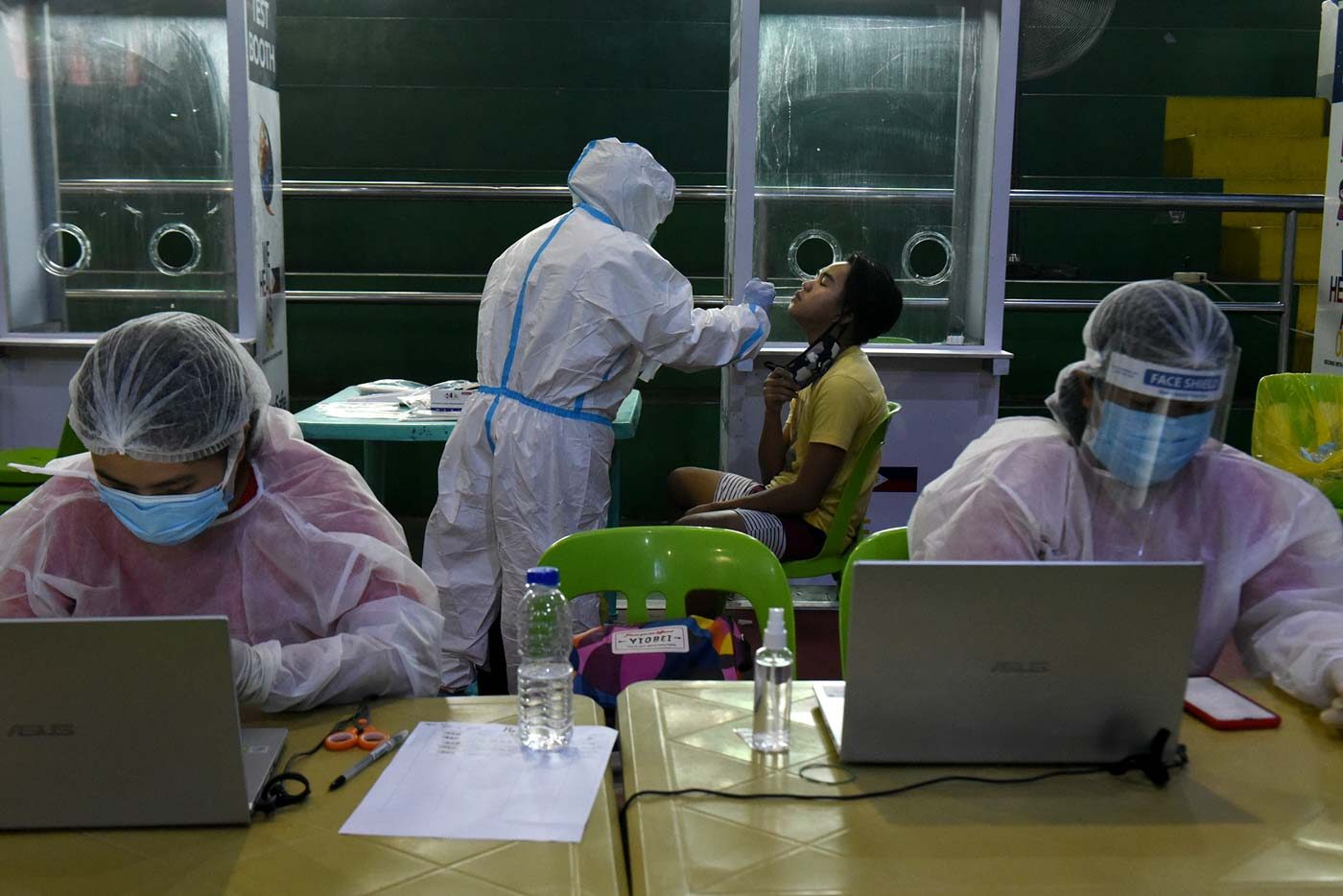SUMMARY
This is AI generated summarization, which may have errors. For context, always refer to the full article.

Medical experts welcomed the Philippine government’s pooled testing initiative but stressed the strategy should only be used in areas and sectors with low prevalence of the virus and among people with no symptoms of COVID-19.
The pooled testing strategy, eyed to cover all Metro Manila residents, had been touted as a game changer by Presidential Adviser for Entrepreneurship Joey Concepcion who is leading the new initiative.
Philippine Society for Microbiology and Infectious Diseases President Dr Marissa Alejandria said the testing strategy, which has been used for other diseases, is being validated by the Philippine Society of Pathologists (PSP) to come up with an effective methodology for testing SARS-CoV-2.
Validation on the correct methodology was needed especially since it would be used to test for a new disease. Due to the infectious nature of the virus, a pooled testing strategy, Alejandria added, would also be most effective for people showing no symptoms of SARS-CoV-2.
“Pooled testing is more effective for those without any symptoms…. It’s not for people showing symptoms,” Alejandria said in a forum on Tuesday, August 18.
A pooled testing strategy was eyed as one way to test more people while economizing on the use of pricey RT-PCR tests.
How it works
Samples collected from a number of people are combined and tested in a laboratory as a group or a “pooled sample.” The Department of Health said on Wednesday, August 19, that a two-stage testing was eyed.
For instance, in a group of 10 people, the samples are pooled into two groups of 5 samples each. If the result of one group comes out negative, then all 5 in the group are presumed to be negative. If the result of the other 5 come out positive, then all 5 people in the group will be re-tested individually to identify who had the positive result.
The main advantages of a pooled testing strategy are hinged on preserving resources and costs. Aside from economizing on test kits, the strategy also preserves other laboratory supplies needed to process tests and can reduce the amount of time to test large numbers of people.
Pathologist Raymundo Lo of the PSP said a pool size of 5 people is initially being eyed for the strategy.
“We are actually recommending a pool size of 5 for faster turnaround time with comparable saving and the least drop in sensitivity. That is our preliminary finding as far as this research is concerned,” Lo said.
An initial pilot run to validate the pooled testing strategy is set to take place in Makati City. The country’s premiere business district was initially targeting to test some 10,000 residents, most of whom were market vendors and public utility vehicle drivers.
Other conditions
The PSP has likewise recommended pooled testing be done only for certain groups such as arriving passengers in seaports and airports, health care workers, market vendors, transportation workers, and communities with a low prevalence of the disease.
Infectious disease experts Dr Anna Ong-Lim and Dr Benjamin Co echoed this in a separate forum. They said pooled testing would be most effective for areas where there was low prevalence of COVID-19.
The recommendation likewise aligned with the DOH’s advice on avoiding its use in areas where the virus was known to have a high presence.
“It’s not effective if you use it in area with high prevalence, meaning to say a high number of cases, because it would no longer be efficient,” said Health Undersecretary Maria Rosario Vergeire. – Rappler.com
Add a comment
How does this make you feel?
There are no comments yet. Add your comment to start the conversation.